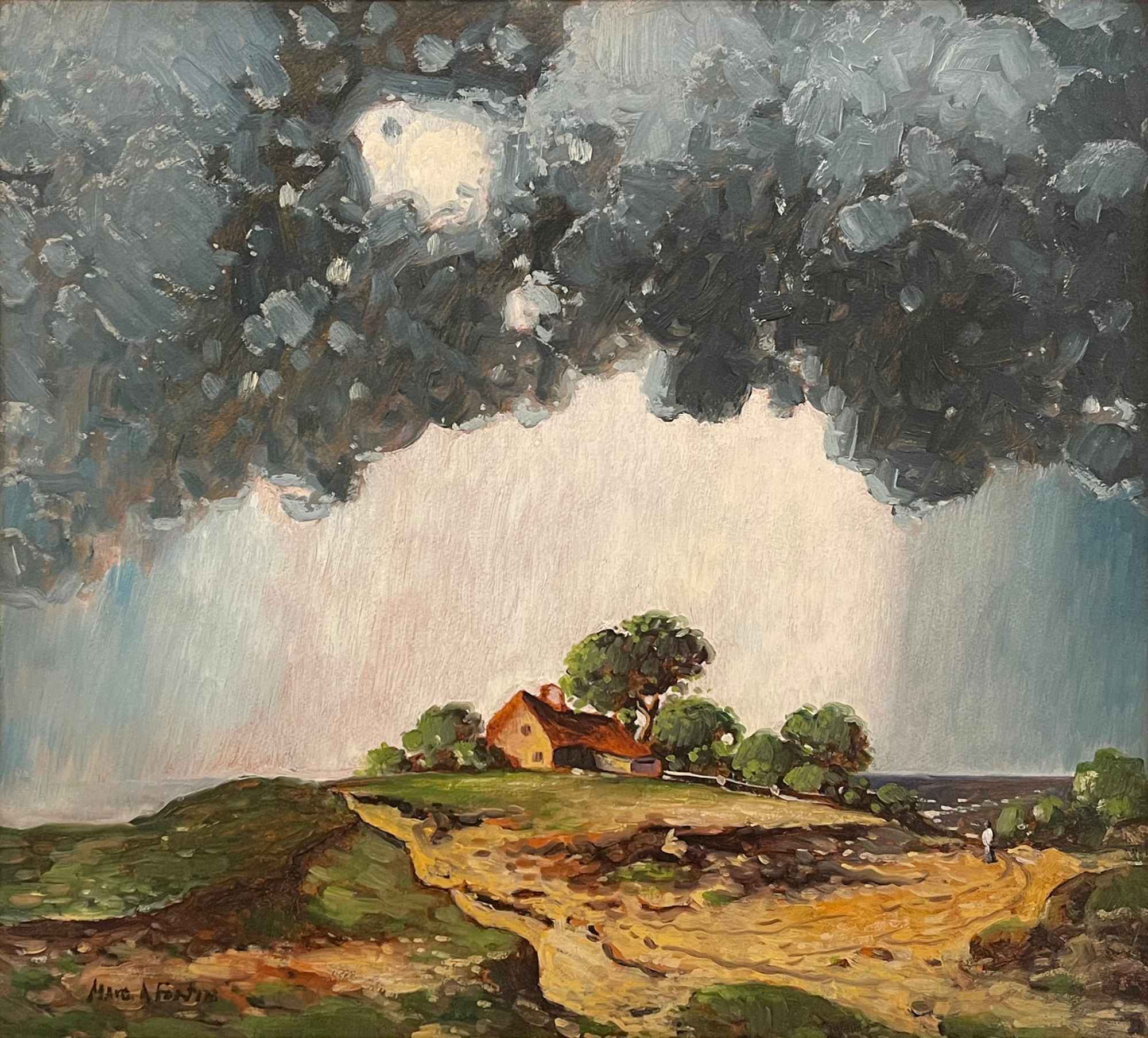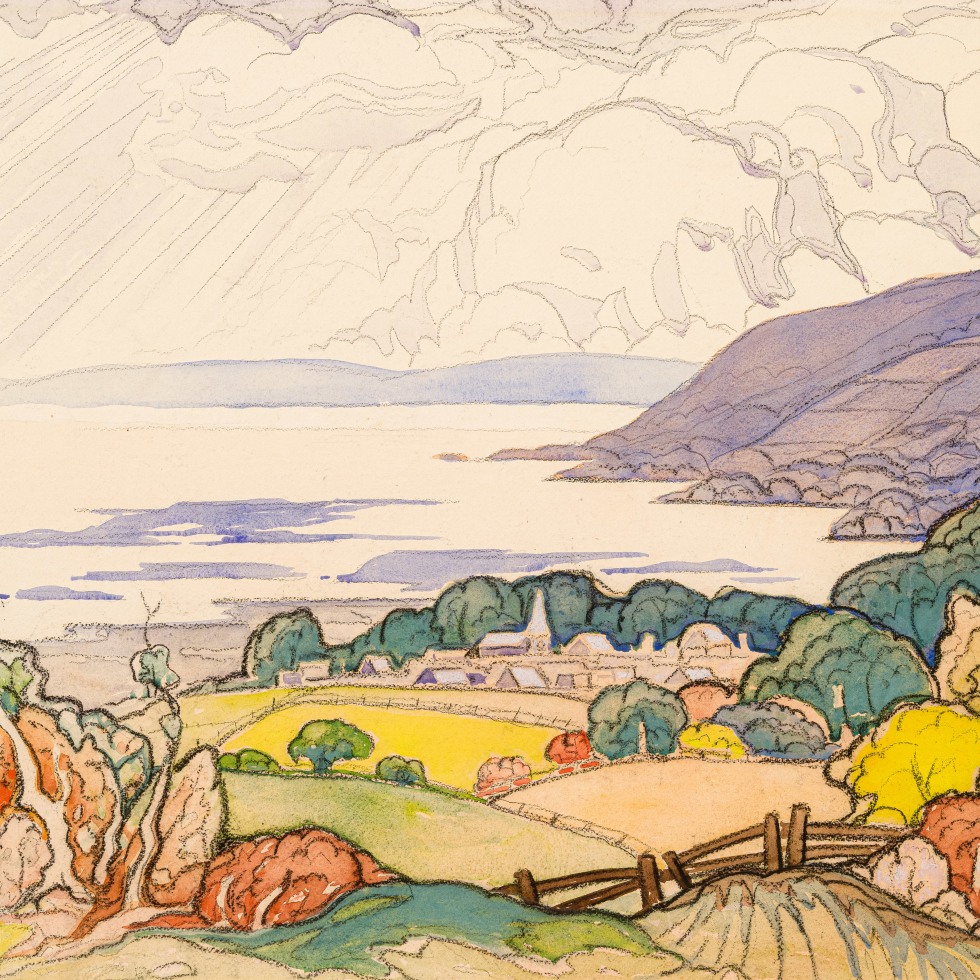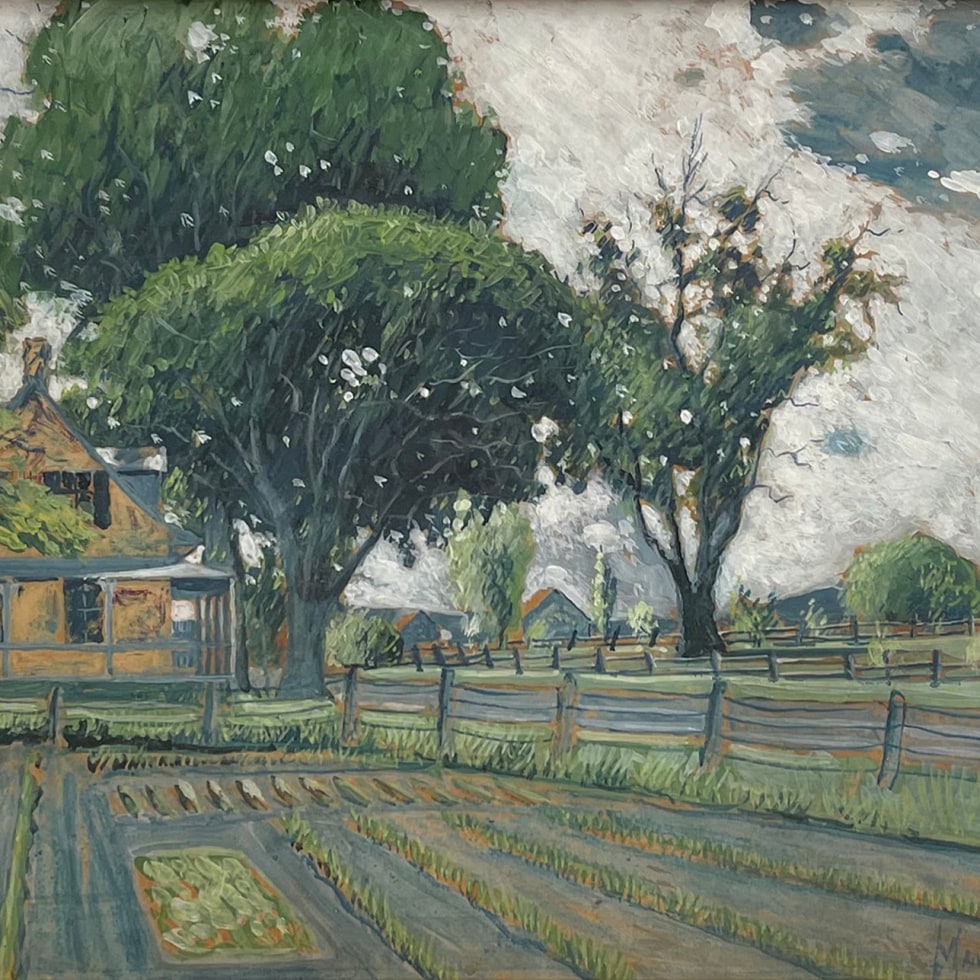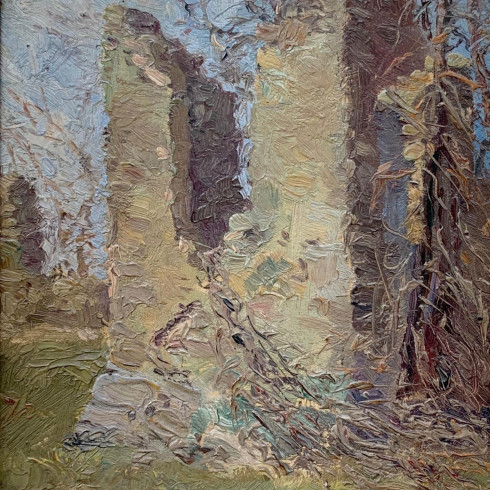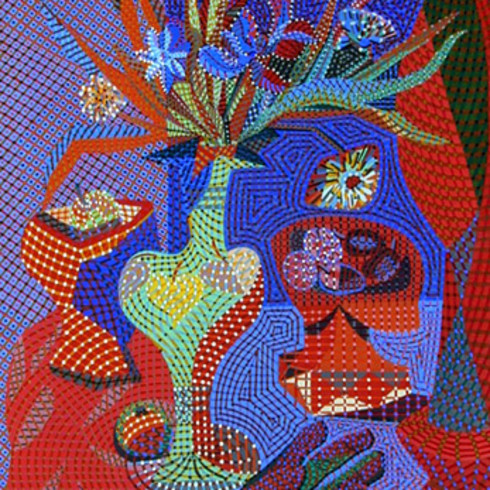After the Storm (Après l’orage), 1919 (circa)
Oil on board
22 x 24 in
55.9 x 61 cm
55.9 x 61 cm
This painting is presently on view at our Toronto gallery.
$35,000
Inscriptions
signed, ‘‘Marc A Fortin’ (lower left)Provenance
Private collection, Toronto
Between about 1915 and 1920, Marc-Aurèle Fortin demonstrated a fascination with the dramatic lighting effects produced by brooding summer skies. In 1919, he exhibited the work, After the Storm (Saint Sulpice Library, no. 4), which was described by a critic as depicting, “an apocalyptic sky, an end-of-the-world sky, with stupendous, terrifying clouds…Here the artist shows us the blind forces of nature, the forces that dominate and crush the barely visible speck that is man” [1]. While the reviewer refers to that painting as a canvas, and ours is painted on board, it could easily describe our After the Storm (Fig. 1), just as it could describe a canvas in the collection of Power Corporation of Canada. Throughout his career, Fortin would use his artistic powers to contrast humanity and nature, with cities, towns and buildings often dominated by comparatively massive natural elements such as trees, clouds and mountains. Fortin’s use of proportion often reveals his focus. He was among those Quebec artists (see, notably, Adrien Hebert) influenced by impressionism, and simultaneously fascinated with urban growth in rapidly industrializing North America.
_______
[1] Albert Laberge, La Presse, 18 Octobre 1919, p.35. Cited in Michèle Grandbois et al., Marc-Aurèle Fortin: The Experience of Colour (Québec: Musée national des beaux-arts du Québec/ Les Éditions de l’Homme, 2011), p. 239.
_______
[1] Albert Laberge, La Presse, 18 Octobre 1919, p.35. Cited in Michèle Grandbois et al., Marc-Aurèle Fortin: The Experience of Colour (Québec: Musée national des beaux-arts du Québec/ Les Éditions de l’Homme, 2011), p. 239.




